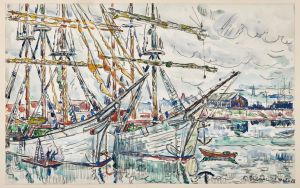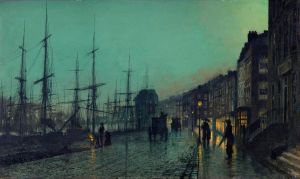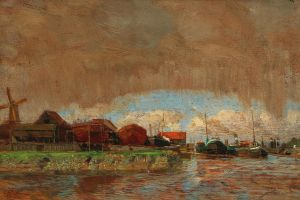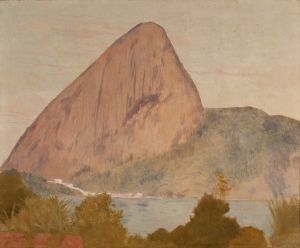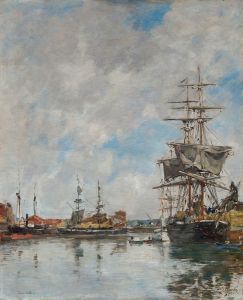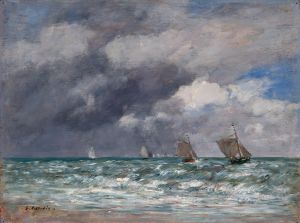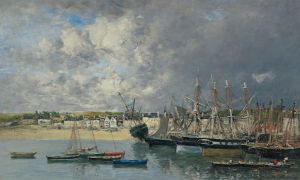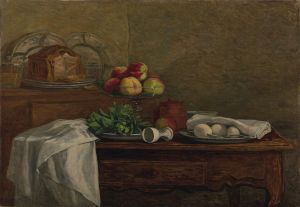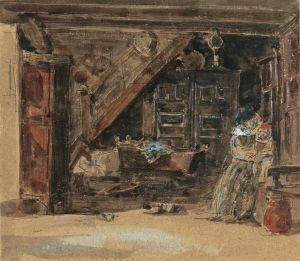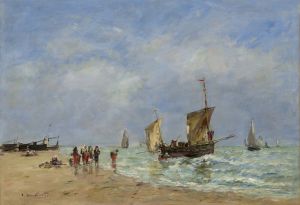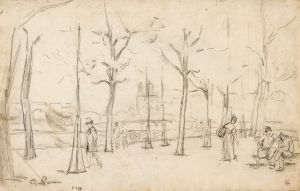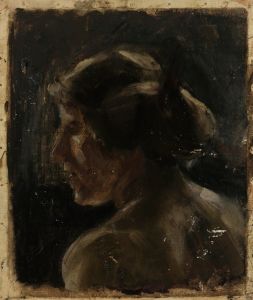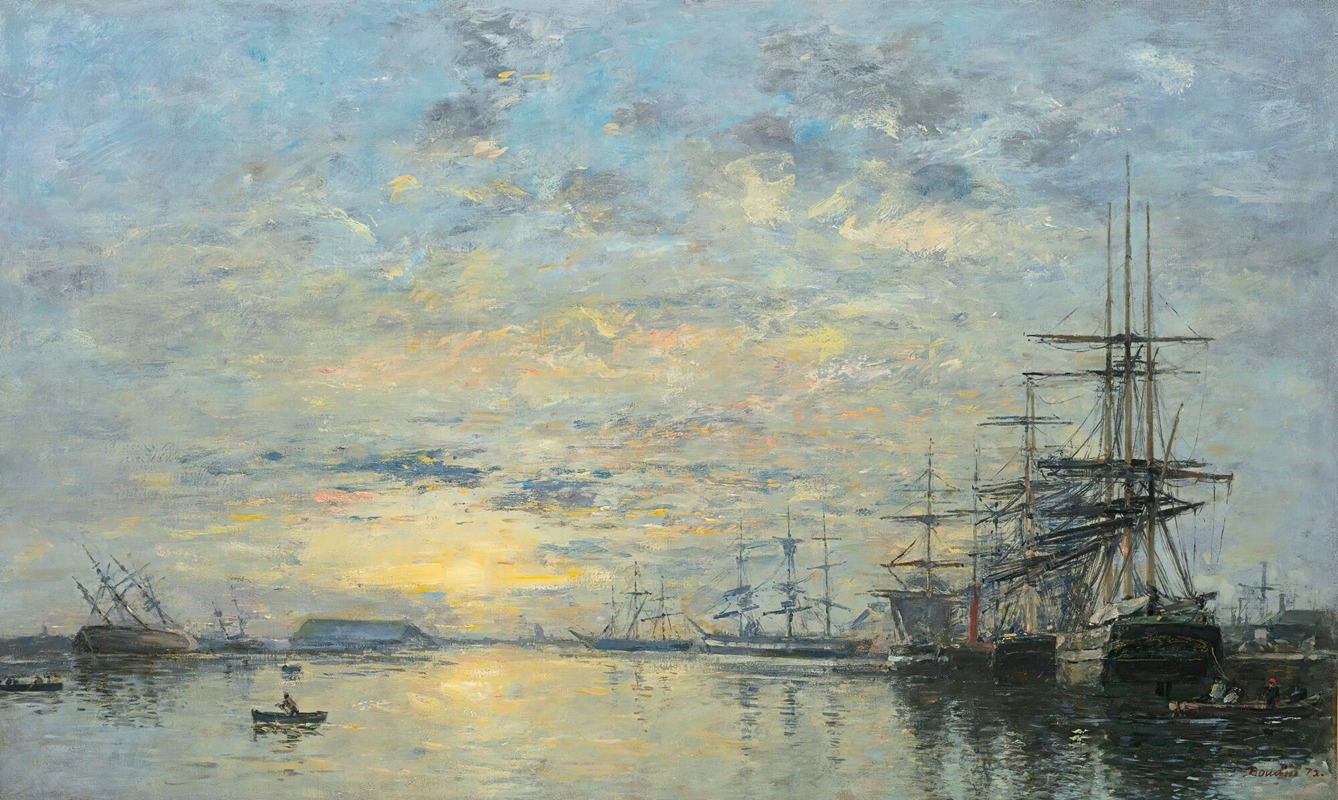
Le Havre, Bassin De L’eure
A hand-painted replica of Eugène Boudin’s masterpiece Le Havre, Bassin De L’eure, meticulously crafted by professional artists to capture the true essence of the original. Each piece is created with museum-quality canvas and rare mineral pigments, carefully painted by experienced artists with delicate brushstrokes and rich, layered colors to perfectly recreate the texture of the original artwork. Unlike machine-printed reproductions, this hand-painted version brings the painting to life, infused with the artist’s emotions and skill in every stroke. Whether for personal collection or home decoration, it instantly elevates the artistic atmosphere of any space.
"Le Havre, Bassin De L’eure" is a painting by the French artist Eugène Boudin, who is widely regarded as one of the precursors of the Impressionist movement. Boudin was born on July 12, 1824, in Honfleur, France, and he developed a profound connection with the sea and coastal landscapes, which became a recurring theme in his work. He is particularly known for his ability to capture the transient effects of light and atmosphere.
The painting "Le Havre, Bassin De L’eure" depicts the port of Le Havre, a significant maritime city in the Normandy region of France. Le Havre was an important commercial hub during the 19th century, and its bustling harbor provided ample inspiration for Boudin. The Bassin de l’Eure, specifically, is a part of the port area, and Boudin's depiction of it reflects his keen interest in maritime life and the interplay of light on water.
Boudin's technique in this painting is characterized by loose, fluid brushstrokes and a light, airy palette, which effectively convey the atmosphere of the scene. The composition typically includes elements such as boats, the harbor infrastructure, and the sky, all rendered with a sense of immediacy and vibrancy. Boudin's ability to capture the fleeting effects of light and weather conditions is evident in this work, showcasing his skill in plein air painting—a method of painting outdoors directly from the subject.
Eugène Boudin's work had a significant influence on the development of Impressionism. He was a mentor to the young Claude Monet, who later became one of the leading figures of the Impressionist movement. Monet himself acknowledged Boudin's impact on his approach to painting, particularly in terms of capturing natural light and atmospheric effects.
"Le Havre, Bassin De L’eure" is a testament to Boudin's dedication to portraying the natural world with authenticity and sensitivity. His works are celebrated for their ability to evoke the essence of the coastal landscapes of Normandy and Brittany. Boudin's paintings, including this one, are held in high regard and can be found in major art museums and collections around the world.
Eugène Boudin passed away on August 8, 1898, in Deauville, France, but his legacy endures through his contributions to the art world and his role in paving the way for the Impressionist movement. "Le Havre, Bassin De L’eure" remains a significant example of his work, illustrating his mastery of light, color, and composition in the depiction of maritime scenes.





